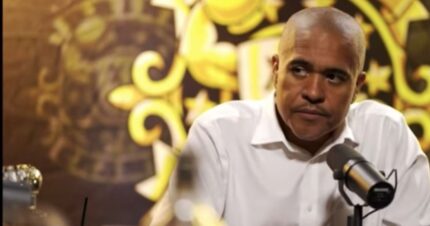By Matthew Boesler
Federal Reserve officials are set to increase their 2023 unemployment projections for a third straight time amid warnings that their inflation-fighting campaign increasingly risks tipping the US economy into a recession.

Economists polled by Bloomberg expect Fed officials to project unemployment rising to 4.6% by the end of 2023 in quarterly forecasts to be updated on Wednesday. That would compare with their median projection of 4.4% in September, and potentially mean 1.5 million more people out of work than now.
Such an increase in the unemployment rate without a recession would be unprecedented. Most private-sector forecasters now see the US entering a downturn in 2023, and the Fed’s own staff economists warned last month that the odds of such an outcome were about 50-50.
If you’re the Fed, “you want to communicate commitment to doing what you need to do on inflation,” said Julia Coronado, president of MacroPolicy Perspectives in Austin, Texas. “The focus is bringing that down. One element of that is at least better balance in the labor market, if not outright higher unemployment.”
On Wednesday, the Fed is widely expected to lift the target range for its benchmark interest rate by a half-percentage point to 4.25% to 4.5%, the highest level since 2008. The updated projections will probably also reveal that Fed officials now expect to take rates to nearly 5% next year, instead of the 4.6% level they projected in September.
Bad news on inflation in October prompted Fed Chair Jerome Powell and many of his colleagues to suggest rates would need to go higher than they had anticipated the month before. Better-than-expected news on inflation in November wasn’t enough to walk those suggestions back.
The differing responses help underscore the central bank’s desire to err on the side of over-tightening, even if it risks causing more damage to the labor market and bringing the economy dangerously close to a recession.
But they also may reflect what’s been going on in the labor market itself as inflation has started to turn: Despite the rapid rise in interest rates this year, job and wage growth have stayed high.
“The labor market remains remarkably tight: Hiring is robust, and we still are seeing rapid wage gains,” New York Fed President John Williams said in a Nov. 28 speech. “But with growth slowing, I anticipate that the unemployment rate will climb from its current level of 3.7% to between 4.5 and 5% by the end of next year.”
Wages in particular are making policymakers nervous. A Labor Department report published on Dec. 2 showed average hourly earnings jumped 0.6% in November from the prior month, bringing the annual change to 5.1% — both figures marking an acceleration over the previous month, defying forecasters’ expectations for a moderation.
And for Fed officials, wage growth is a critical input to the outlook for inflation. Powell, in a Nov. 30 speech, broke down the inflation index into different components, singling out services excluding housing as the one that “may be the most important category for understanding the future evolution” of price pressures.
Inflation Signs
“The labor market, which is especially important for inflation in core services ex housing, shows only tentative signs of rebalancing, and wage growth remains well above levels that would be consistent with 2% inflation over time,” he said.
Forecasters expect a monthly Labor Department report on consumer prices due at 8:30 a.m. in Washington to show so-called core inflation, which excludes food and energy, moderated further in November. In part, that’s due to ongoing softening in goods inflation — especially in used cars and trucks — that soared earlier in the pandemic.
In services, though, price pressures are also set to moderate even if wage growth doesn’t, according to Omair Sharif, president of Inflation Insights in Pasadena, California.
That’s because the outlook for inflation in the two biggest categories of services aside from housing — medical care and transportation — isn’t particularly affected by labor-market patterns, and both are set to come down in the months ahead.
Even so, Fed officials are “just nowhere near close to thinking that the labor market has cooled to the extent that they would like to see it cool,” Sharif said. “And they’ll just keep pressing on the brake until it does start to show up on a much more consistent basis.”
–With assistance from Sarina Yoo and Steve Matthews.
More stories like this are available on bloomberg.com




